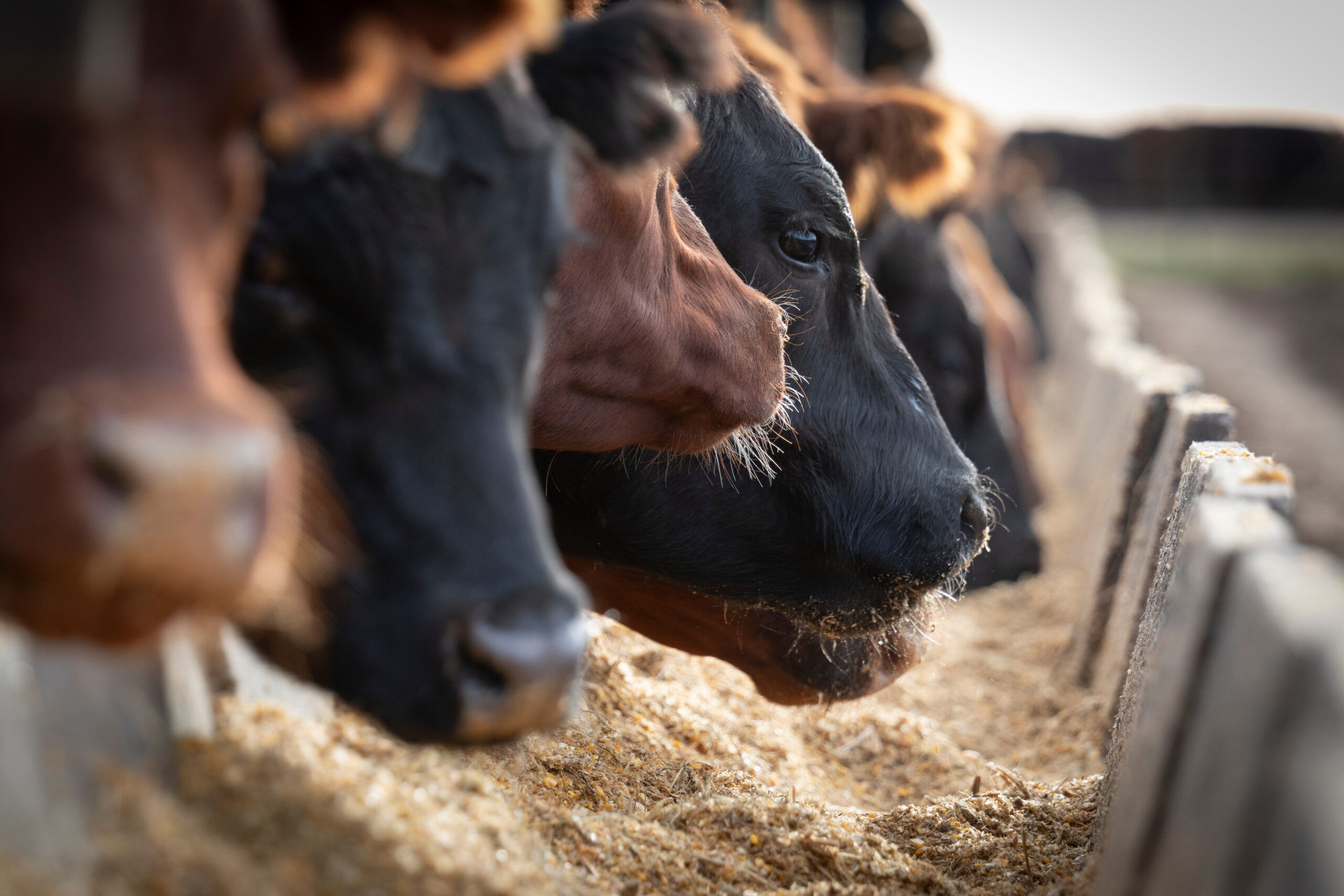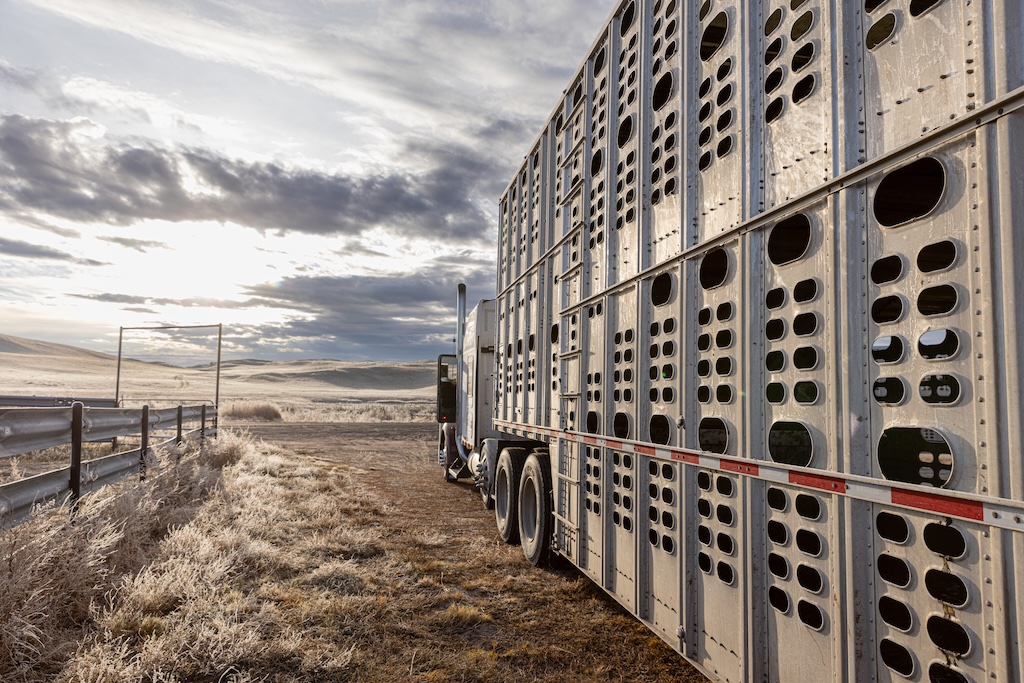AB Direct - Steers
Rail: 485.00-490.00 del
AB Direct - Heifers
Rail: 485.00-490.00 del
US Trade- Steers
Rail: 340.00-345.00 (IA, NE)
US Trade - Heifers
Rail: 340.00-345.00 (IA, NE)
Canadian Dollar
0.39

The foundation for market access is built on-farm
Alberta’s beef sector has been relatively fortunate, compared to poultry and swine, having experienced few incursions of rapidly spreading diseases with high rates of mortality. That said, we all remember BSE and the devastating, long-lasting impact it had on our industry.
We are a sector that relies on trade. Around 40–50 per cent of our total beef production is exported every year, with little room to absorb more production domestically. While the U.S. is certainly our largest export market, we cannot discount the importance of other international destinations for our beef products, especially with the current volatility in the U.S.
To maintain our access to these critical markets, we need to ensure that other countries have confidence in our production systems, animal health protocols, food safety standards, and product quality.
Beef producers aren’t perfect. Our biosecurity practices can be an afterthought, we sometimes don’t have the recordkeeping practices that support the level of detail required to trace animals through our fragmented value chains, and we tend to forget about the next part of the chain once our calves are sold. We face a lot of challenges with weather, rising input costs, competitiveness, consumer perceptions, and so on. But we produce some of the highest quality and safest beef worldwide, and it’s in high demand thanks to producers—and thanks to government policies that ensure we consistently meet the high standards of production that are expected by trading partners.
Canada Meets International Standards and Proves It
On a global scale, the World Organisation for Animal Health (WOAH) sets standards that aim to improve the prevention and control of disease, including those animal diseases transmissible to humans (zoonoses). The World Trade Organization (WTO) recognizes WOAH as the only authorized organization to develop standards related to animal health and zoonoses. WOAH standards are designed to ensure animal health and food safety while avoiding unjustified barriers to trade.
WOAH has official status diseases, such as foot and mouth disease (FMD) or BSE, that have very strict protocols that must be followed in the event of an outbreak to regain a disease-free status. Other diseases are monitored under a self-declaration framework, or rigorous domestic policies may be applied. In all cases, countries need to have demonstrated and scientifically supported prevention, surveillance, reporting, and response measures in place to declare freedom from disease.
This is where the Canadian Food Inspection Agency (CFIA) comes in. CFIA enforces food safety and animal health regulations to protect animal and human health, the economy, and trade. They are responsible for reporting to WOAH and other countries, as well as maintaining the rigorous standards that support market access, such as demonstrating freedom from disease through surveillance and ensuring that any incidence of trade-limiting disease is thoroughly investigated and eradicated as soon as possible. This helps to maintain the confidence of our trading partners—something our industry depends upon.
Creating Change Together
Mention the letters “CFIA” to producers and you’re likely to spark feelings of anger, frustration, or fear. The hard truth is that the measures CFIA takes during a disease investigation have both immediate and lasting impacts, not only on an operational level, but on an emotional one. Our herds are our pride and our way of life.
There’s a feeling that producers are treated like a number. That CFIA doesn’t understand the impact their actions have. That they don’t appreciate the realities of beef production. That their decisions don’t make sense. That they have a goal to make producers’ lives more difficult. And let’s face it, no one reacts well to having someone come in, upend your day-to-day activities, and create uncertainty for your future. It’s easy to see why CFIA personnel are often greeted with distrust and suspicion by producers.
Together we can change that.

“I’m from the Government and I’m Here to Help”
The beef industry is made up of people. CFIA is made up of people. Learning to see each other as people first and institutions/industry second will go a long way to creating shared understanding and empathy. I’ve consoled a beef producer in tears over the loss of his herd. I’ve also comforted a CFIA employee in tears who had to deliver that news after exhausting all other possibilities.
Beef producers have a job to do, and so do the people within CFIA. And while it may not seem that way in the heat of the moment, we have the same end goal—to guarantee the sustainability of our industry well into the future. It isn’t “us vs. them,” it’s “all of us, together.”
Producers and cattle industry representatives can help CFIA employees understand our industry, our challenges, and our production systems better—without getting angry, throwing up our hands, and saying, “they just don’t know anything!” and hoping they go away. CFIA personnel can provide more transparency about why decisions are made, the justification for those decisions, and improve their communication with producers—without arrogance or dictating “this is how it will be, and you will comply.” We can help each other find common ground and compromises that lessen the burden on producers without jeopardizing disease control and eradication.
Tomorrow’s Future Begins Today
Sometimes we are forced to do uncomfortable and unpleasant things to protect our future. Producers involved in a disease investigation, who undergo financial and emotional hardships during the investigative process, who end up under quarantine and testing, who may lose their herd if infected, are safeguarding the industry for the rest of us.
Sometimes, you can do everything right and still get caught up in a terrible situation. It’s not fair that some producers must shoulder this responsibility for the benefit of the rest of the industry, and they should be applauded and supported—not avoided or penalized. Next time, it could be you, or me.
Industry organizations like ABP and CCA are consistently working with CFIA and other government departments to improve policy, operational procedures, and compensation, but we can’t suggest positive changes without the help of those producers most directly impacted, and we certainly make better headway when CFIA or those government departments perceive our industry as constructive.
If a disease like FMD ever hits Canada, we’re going to need every ounce of cooperation, collaboration, and compassion we can muster. There’s a lot of bad blood and past mistakes to overcome on both sides. Creating trust, changing perceptions and attitudes, and learning to work together will take a lot of willingness, time, and effort from everyone. The best time to start trying was yesterday, the second-best time is now.
This article was first published in Volume 5 Issue 3 of ABP Magazine (Fall 2025). Watch for more digital content from the magazine on ABP Daily.

